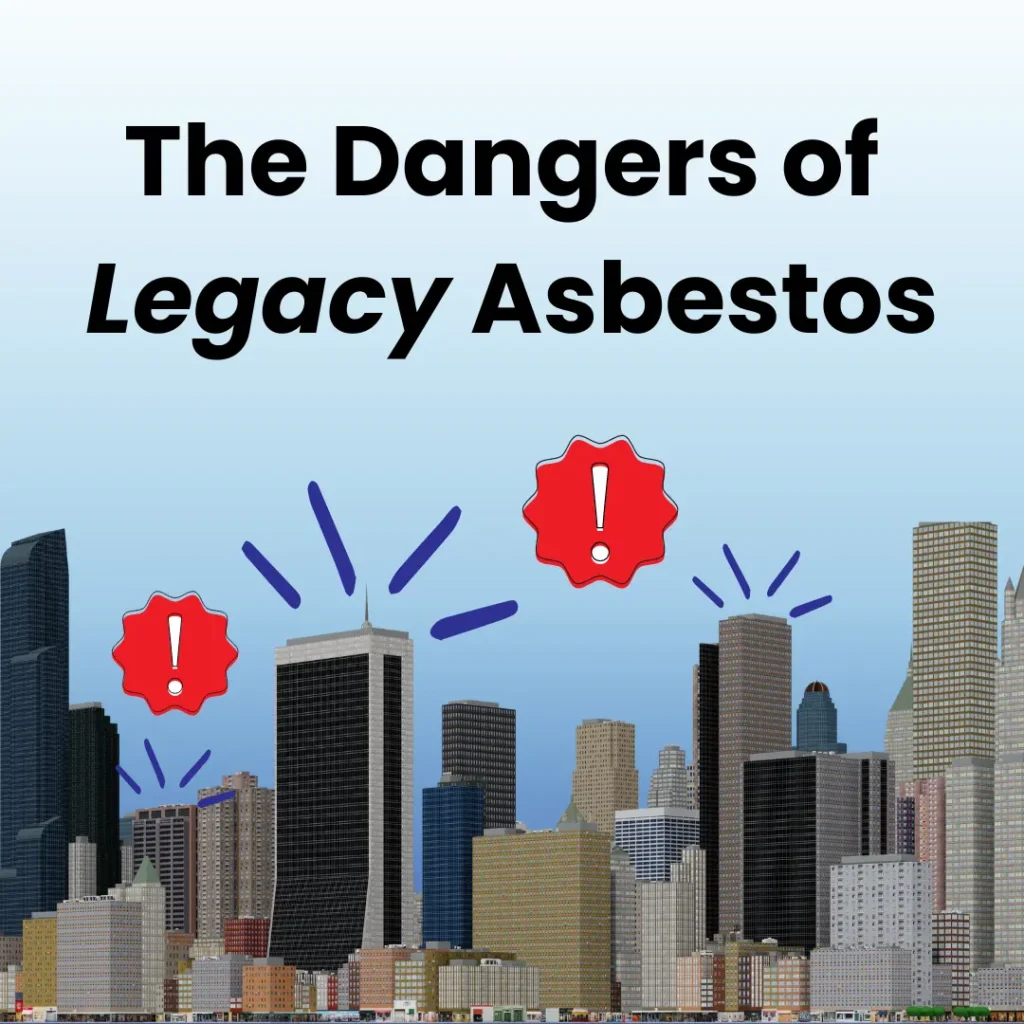Key takeaways: Legacy asbestos is the asbestos that remains in older buildings and infrastructure. Legacy asbestos will degrade eventually, and there is no infrastructure (or legislation) in place to address this inevitable problem. Looking to other countries like Australia to see their courses of action is crucial for mitigating legacy asbestos exposure.

What is Legacy Asbestos?
Legacy asbestos is extant asbestos in older buildings, infrastructure, industrial sites, and pockets of the natural environment. Legacy asbestos can be found in flooring, vinyl tiles, textured paint, water pipes, sealant, wall insulation, roofing shingles, and other construction/cosmetic materials.
The U.S. banned new import, production, and usage of all types of asbestos in March 2024, lagging decades behind other Western nations’ efforts to control asbestos-related disease. While the Environmental Protection Agency’s ban was a critical first step towards addressing the public health epidemic causally related to asbestos; however, the ban didn’t account for the asbestos inherent to twentieth century infrastructure that’s still intact. Additionally, the ban isn’t immediately effective, meaning that its effects will be felt incrementally. (Companies are bound to a 12 year hard deadline for completely ceasing asbestos production and import. Until that non-negotiable deadline, they’re legally allowed to proceed as usual. This means that asbestos is still being imported and used in the U.S., and will be for the immediate future.)
While asbestos isn’t necessarily dangerous when it’s contained—meaning it’s bound in another substrate or object, like textile or paint—when it degrades or is physically disturbed, it can become airborne. Once airborne, asbestos poses serious health risks: it can easily be ingested, become lodged within the body, and can cause a host of health issues, the most notable of those being mesothelioma. Asbestos usually degrades between 50-70 years after it was first implemented. If not mechanically disturbed before its degradation, it should remain intact. But, with time and eventual renovation/demolition, asbestos is bound to become dislodged from its substrate “host.” So, while legacy asbestos might not be an urgent issue for all immediately, legacy asbestos will certainly be an issue for all eventually.
Looking to Australia
Australia banned the import, use, and production of all asbestos and asbestos-containing products in 2003, which was before the EU’s ban in 2005 and well before the U.S.’s 2024 ban. Because they’ve had over 20 years to perfect and implement regulatory legislation, looking to their strategies for handling legacy asbestos is paramount.
Australia’s government created a task force called the Victorian Asbestos Eradication Agency (VAEA), which was responsible for developing and implementing plans for removing asbestos from Victoria’s government-owned buildings. Here are some of the actions they took to address legacy asbestos:
- They created a consolidated asbestos registry. This streamlined the tracking progress of known asbestos.
- They created a workplace asbestos registry, in which employers are required to track any asbestos in the workplace. Employers record the location, type, and frequency of asbestos. In this way, registries act as a kind of “triage” for funding and support from the VAEA.
- They also created a risk assessment model, which takes into account the condition, degradation, location, and risk vs. benefit of asbestos removal, among other factors. This allowed the VAEA to create a standard of “care,” in which they could logically prioritize some legacy asbestos sites over others. This means that areas of highest risk are treated first.
The VAEA has taken critical steps to address legacy asbestos, and the U.S. should adopt some of their policies. They’re proactively mitigating asbestos exposure for Australian citizens.
If you or a loved one has been diagnosed with mesothelioma or another asbestos-related disease, we are here to help. Our website offers useful information regarding types of asbestos-related diseases, hospitals to receive treatment in Pennsylvania, a variety of different treatment options, and more. For more information or for legal help, please call us at (800) 505-6000 or simply fill out our contact form.
Sources:
https://www.mdpi.com/2071-1050/15/3/2507
Will EPA’s asbestos ban decrease cancer rates?